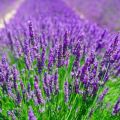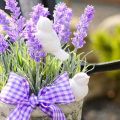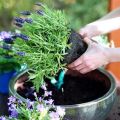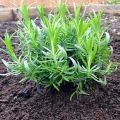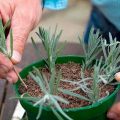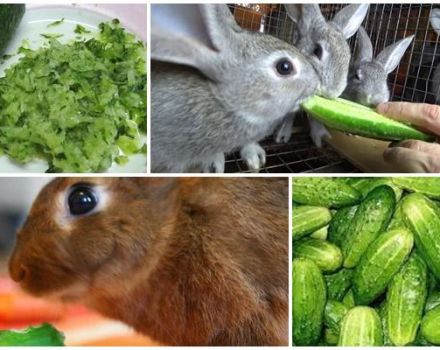20 best varieties and types of lavender with descriptions and characteristics
Those who do not have on their site, dacha, an amazing flower - lavender - should think about purchasing it. It is not only a beautiful, fragrant flower, but also a storehouse of beneficial properties. It is used for brewing tea, in cosmetology, aromatherapy, traditional and folk medicine. Garden lavender varieties can be selected for your region. A wide range of colors will not leave you indifferent.
Content
Plant features
Among perennial flowers, gardeners and landscape designers prefer lavender. Height, depending on the variety, ranges from 10 to 100 centimeters. Branching shoots, erect. In some specimens, the trunk is lignified from below. The stem ends in spike-shaped inflorescences of various tones: from blue to dark purple. There is a lavender with a white, yellow color. The flowers are two-lipped, emit a bright aroma.
Flowering lasts 30-40 days. The fruits fall off after ripening. Flowers are used in folk, traditional medicine, due to the presence of essential oil in the composition.
In the northern regions, many varieties do not withstand harsh winters, so they are grown as annuals. Plants are propagated by seeds, cuttings. Some varieties bloom in the first year after sowing. Lavender loves sunny, neutral ground.
Varieties of lavender
More than 30 types of lavender grow in nature. And only a few of them are cultivated.
Narrow-leaved
Bushes of narrow-leaved lavender (Lavandula angustifolia Mill.) Are distinguished by their large dimensions - 100 x 100 centimeters. The numbers determine the width and length of the shoots.
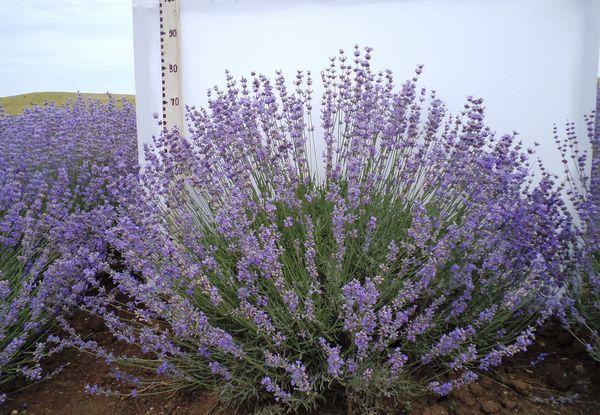
The root is pivotal. The stem is branched, lignified from below. Leaves - 2-6 centimeters, narrow, drooping, green. Flowering begins in June, purple-pink color. If the inflorescences are not cut off, lavender multiplies by self-seeding.
Toothed
In the wild, scalloped lavender grows in the Atlantic Islands. A chic shrub spreads 1.5 meters wide. Shoots grow up to one meter. At the end of the stem there are large flowers in the form of a spike, purple in color, with a blue tint.
The flowering period is the second decade of July. A heat-loving plant in northern latitudes is grown at home. Leaves - 4 centimeters long, serrated.

Royal gardeners of Great Britain have marked the variety with the Garden Merit award for excellent external characteristics, bright aroma.
Broadleaf
Broad-leaved lavender is a derivative of many varieties. Life expectancy is 10 years. To prolong the lifespan, gardeners prune the shoots after flowering, then in the fall.A lignified and green part is left on the stem. This measure prevents the death of the plant.

Inflorescences of different colors: blue, lavender, violet. Pleases with flowering, aroma in the last month of spring.
English
Narrow-leaved, it is the English variety. The plant lives on one soil for 20 years. Winter-hardy variety, prefers sunny areas, raised beds. The stems of the English variety are with a white edge, so from the side the bushes seem bluish-gray. In the wild, it is found in the Kuban, perfectly takes root in flowerpots.
Munstead
A derivative of the Mansted variety is the narrow-leaved lavender. The variety is very popular in the southern regions of Russia, Ukraine.
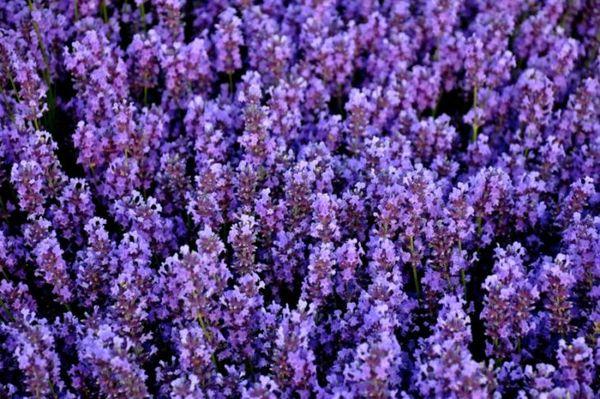
A compact bush 40x40 centimeters, with bright green leaves. The inflorescences rise above the stem like blue candles. The flower cannot be overlooked due to the contrast of shades. Delicate aroma of flowers, leaves gives charm to the plant and gives away its location.
The plant is resistant to drought, but not for a long time. Moderate watering is required during dry summers. Does not tolerate acidic soil. Flowering occurs in July-August.
Hidcote
The bush of the Hidcote blue variety is not high - 60 centimeters, but the spreading is almost twice as large. Therefore, it is often used in landscape design.
Life expectancy and constant flowering is 25 years. Strongly branching shoots, lignified from below. The flowers are large, blue-violet. Hydcot blue pleases with flowering, pleasant aroma all summer long. This is the second reason for using a shrub to decorate paths, flower beds.
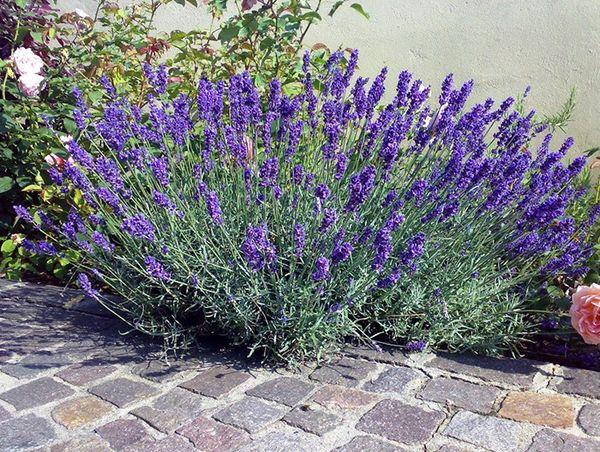
Multi-cut
The heat-loving variety multi-cut does not tolerate frost, is grown as an annual plant in the Central lane. In the process of growing it is unpretentious. Blooms in the first year after sowing seeds, throughout the summer. Until late autumn. The inflorescences are collected in a spikelet, have a blue-violet color. The bush looks compact at a height of 60 centimeters.
Southerner
The Yuzhanka variety was created by domestic breeders. The bush is compact - 60 centimeters long and wide. The leaves are narrow, deep green. Purple inflorescences stand out against their background. The variety grows well in the open field. To grow a flower at home, you need to stratify.
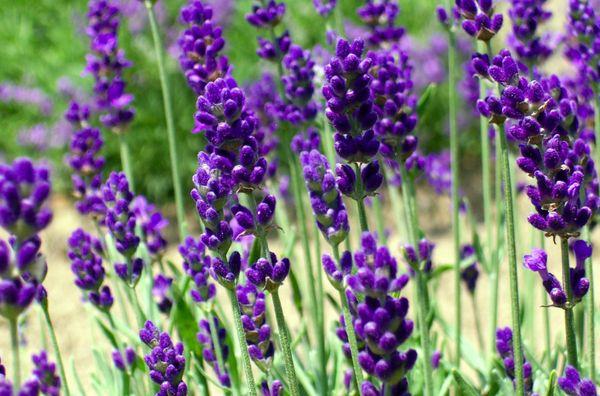
Stekhad
An amazingly beautiful variety - Stekhadskaya. Large inflorescences of different shades sit on long bracts: white, green, cherry, lilac, purple. The decorativeness of the plant allows you to diversify the design of the room, garden, flower beds. Flowers appear in May and continue to delight until July. They rest for a month and again enter the flowering phase.
French
Broadleaf, aka French, variety. Does not tolerate cold winters below -15 degrees. In cold regions, it has established itself as a pot culture.
Munstead
The Munstead flower is a compact bush plant. Blossoms in lavender, lilac color. It is not afraid of winds outdoors. The variety is popular in Europe.
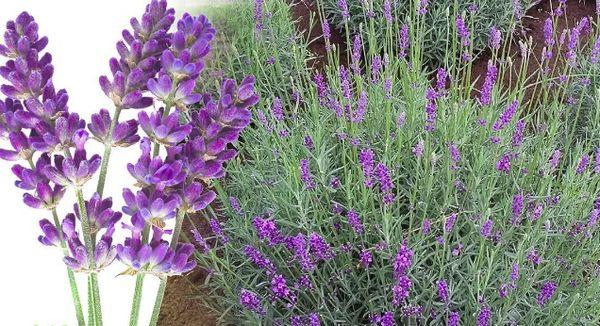
Delight
The Uslada variety was created by domestic breeders. Loves sunny areas. Possesses frost resistance, drought resistance. Cut flowers are used for decoration in the house. In winter, the scent of dried flowers repels moths.
Butterfly
The Butterfly variety grows in a compact bush. Height - 60 centimeters. Inflorescences of different colors: blue, lilac, dark purple.
Purple Haze
Variety Lilac mist of miniature size. Height varies from 18 to 20 centimeters, crown girth - 30. During flowering, spreading, the height of the bush doubles. The plant is frost-resistant, tolerates frosts without shelter, and is not attacked by pests.
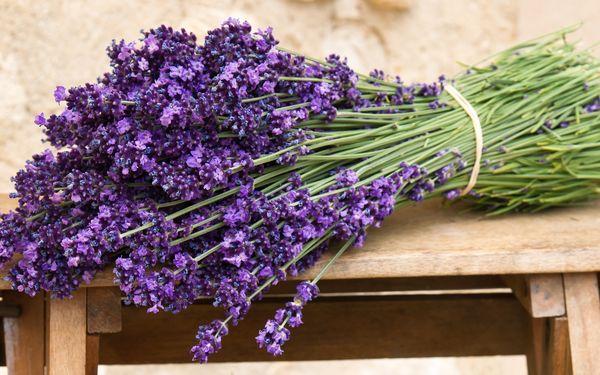
This variety loves sunny areas, soil with neutral acidity. Lilac inflorescences with a pleasant aroma.Excellent honey plants. Used for making tea, in aromatherapy.
Elegans
The elegans semi-shrub is distinguished among its fellows by its resistance to frost. In northern regions, shelter is not required if winters are snowy. In snowless areas, they cover with spruce branches. Plants 35-40 centimeters in height look great in flower beds, for the foreground with dwarf trees, tall flowers.
The stem is lignified at the bottom. Life expectancy is 10 years. The buds are large, with a delicate specific aroma. The color is purple. Blossom in the year of sowing.
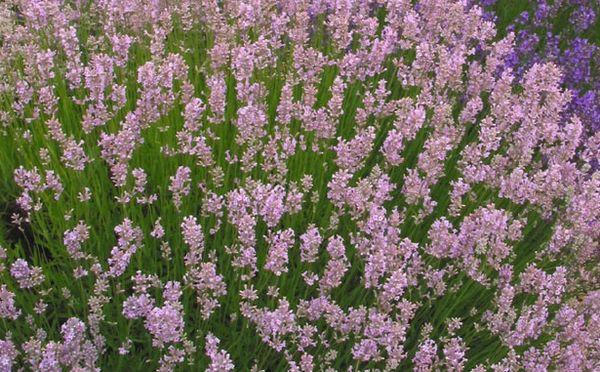
Which variety should you choose?
In regions with a hot climate, thermophilic varieties take root perfectly: Zubchaty, Shirokolistnaya, Mnogonadreznaya, Mansted.
In the middle lane, winter-hardy varieties are planted: Narrow-leaved, Lilac fog, Elegance. Suitable among domestic species: Yuzhanka, Uslada.
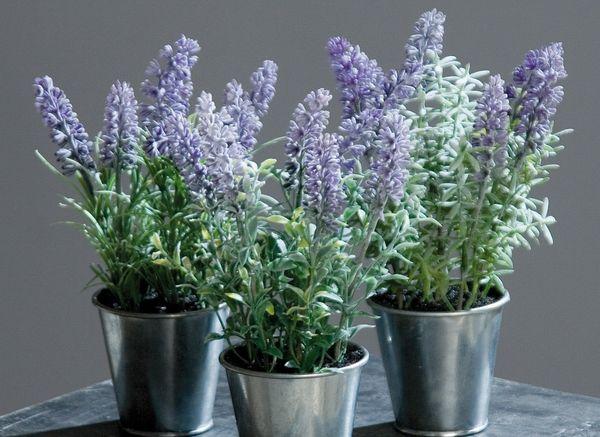
Application in landscape design
Compact lavender bushes decorate garden plots, flower beds. Landscape designers use all types of lavender.
- For hedges, Hidehot, Yuzhanka is suitable.
- The paths are framed with multi-cut lavender, which blooms until late autumn.
- Miniature varieties: Mansted, Elegance - used for the foreground.
The original decision of designers, when they use lavender of various varieties, but with the same tone, and vice versa.
Lavender looks great in rockeries, alpine slides, on terraces, balconies.



